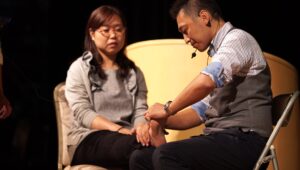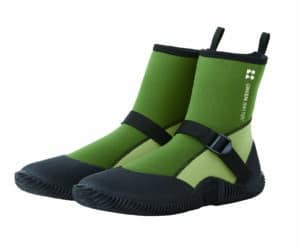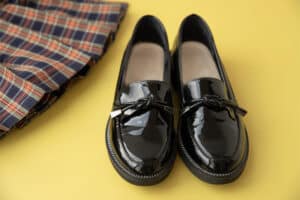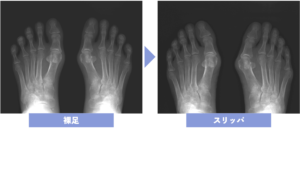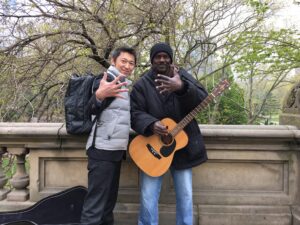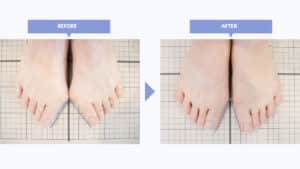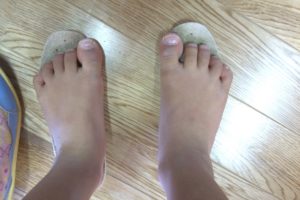第9話|転ばぬ先の「靴下」
こわい転倒、介護が必要になった人のほとんどが足の問題
65歳以上の方が寝たきりになる原因は、脳血管疾患、老衰に次いで、骨折・転倒が第3位。転倒による死亡者数は年間7千人を超え、交通事故死を追い抜いてしまいました。転ばないためには、バリアフリー化で段差をなくすなどといった住環境の整備も有効ですが、転ばない足を作ることも大切です。では、どうすれば転ばないようになるのでしょうか。

85歳を過ぎると、ビックリするくらい要介護率が上がります。なんとなく「加齢」のせいにしそうですよね。

でも内訳をみると、関節疾患・転倒・衰弱で約40%を占めています。それぞれが違う原因のように思えますが、実は「足元」の問題ですべて解決するんです。

さらに転倒のきっかけを細かく分析すると、つまづき・すべり・ふみはずし・バランス崩壊で80%を占めます。年取ったからだろ〜と考えてしまいますが、それは間違い。浮き指によって起こるものばかりなんです。
転びやすい足指の変形とは?
試しに、わざと足指をかがめた状態で歩いてみてください。膝もつま先も上がらず、まるでサルのように、不安定でぎこちない歩き方になるのがわかります。逆にいえば、足指さえ広がっていれば、転倒しにくい歩き方になるわけです。

手でも同じことなのですが、指がまっすぐ伸びていればつま先はグッと上がります。

ところが、指を曲げると、つま先は上がりにくくなるんです。つまり、つまづく原因が足指にあるということです。Hand-Standing理論でも詳しく解説しているので、よかったら見てみてください。

かがみ指・浮き指・外反母趾は転倒しやすいので要注意!
バランスが悪くなる足指の変形
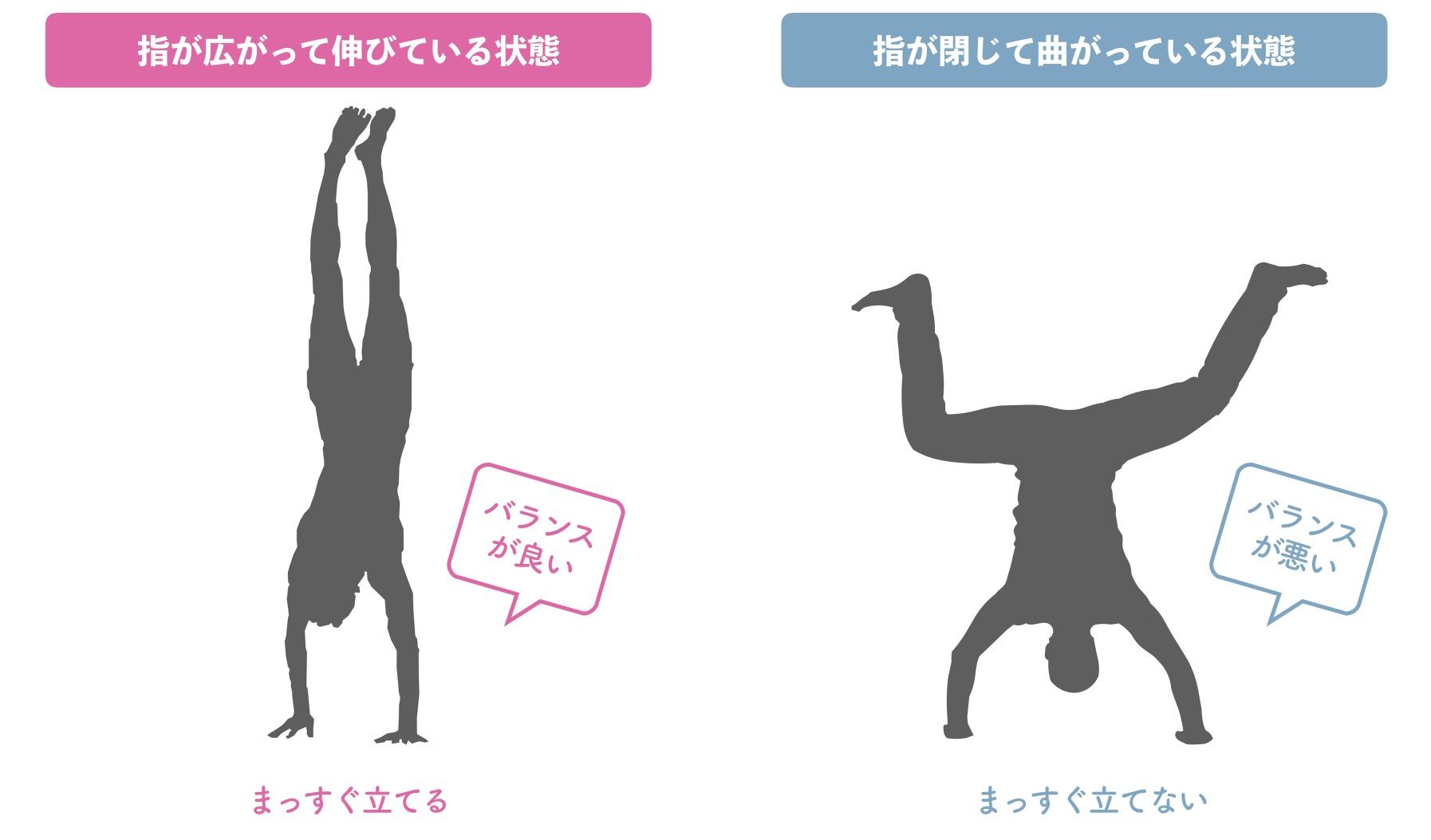
逆立ちするとき、手の形はどうしますか?手の指を大きく広げ、まっすぐ伸ばしているはずです。指を広げて伸ばし、地面をつかむことで上体のバランスが保てるのです。手の指が閉じていたり、曲がっていたら逆立ちはできません。手を「足」に置き換えると、手首は足首、ひじは膝、肩は股関節に当たります。足指がしっかり広がって伸びている状態であれば、最も無理のない体勢で、まっすぐにバランスよく立つことができます。

どんなに土台がゆがんでいても、体は何とかバランスをとりながら立つことができます。しかし無理にバランスをとることで骨がゆがみ、筋肉が疲労します。それらの部位にかかる負担が外反母趾をはじめとする様々な痛みや体の不調を招くわけです。これが関節疾患につながるわけです。
体全体の筋力が落ちる足指の変形
私は2011年、国際医療福祉大学の森田正治教授の協力を得て、平均年齢65歳の女性10人を対象に実験を行い、靴医学会・転倒予防医学研究会で発表しました。内容は、歩行距離、ももあげ、椅子からの立ち上がりの回数などを、はだしと、転倒予防目的で開発した足指が広がる靴下を履いた状態で比較したもの。実験では、靴下を装着したその時から、転倒予防に必要な立ち上がり(大腿四頭筋)ともも上げ(腸腰筋)の筋力が平均27%以上、歩行速度は13%向上しました。
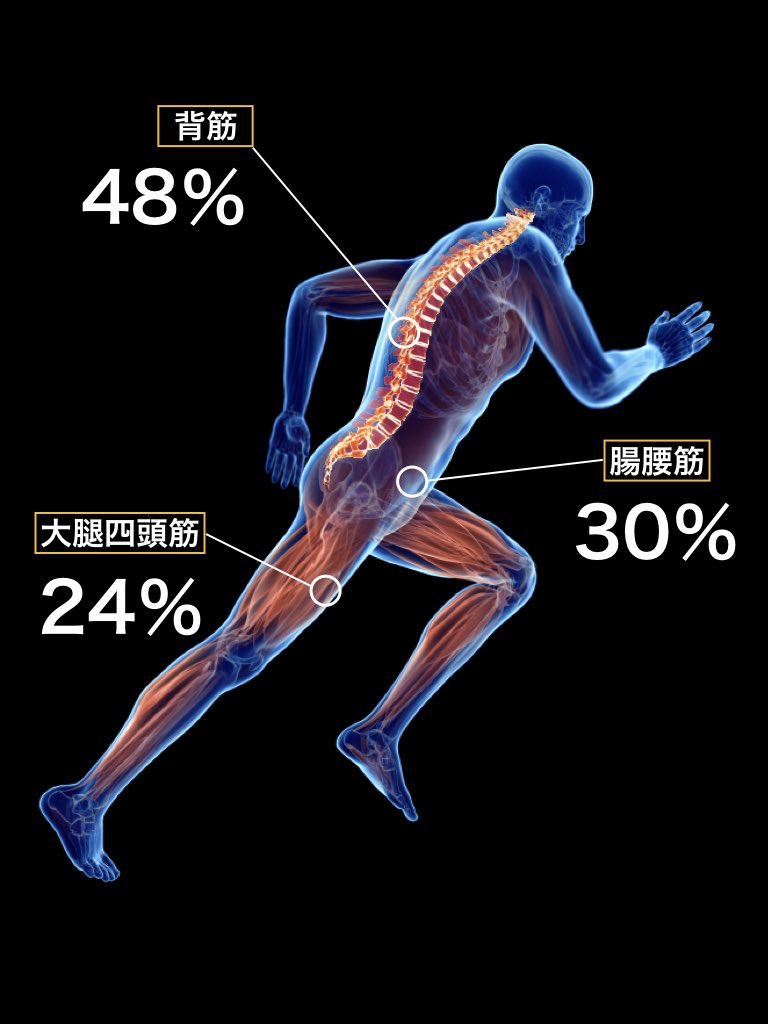
これは足指を広げて伸ばすと、それだけ筋力がアップするということなのですが、逆に言えば、足指が曲がっているとそれだけ筋力が落ちてしまうということなのです。特に高齢者に多い「猫背」は背筋力と深く関わっているので、48%も落ちてしまうと背筋を伸ばして歩くことは難しくなります。

歩行速度と寿命には大きな関係があり、しっかりと歩けることはそれだけで健康な証拠。言い換えると、歩ける足づくりには健康長寿に直結しているのです。
転ばぬ先の「靴下」YOSHIRO SOCKS
歩くというのは一番のリハビリ。ただ歩くだけでも、目や耳から入る情報を判断しながら体中の筋肉をスムーズに動かす訓練になります。あぜ道や山道、坂道であれば、平地では使わない様々な筋肉も使うため、さらに足指が鍛えられます。
こう話すと「やっぱり、素足が一番ですね」と思われるでしょうが、外反母趾や扁平足、内反小指など、既に足が変形したはだしの状態で歩けば、変形が進む危険性があります。不安のある方は「転ばぬ先のつえ」の代わりに、矯正する機能がある靴下を履かれることをお勧めします。ちなみに、歩行困難で来院された90代女性は、この靴下を履いて治療に取り組まれた結果、ご自分の体重の2倍近い私を軽々と支えることができるようになりました。
YOSHIRO SOCKS
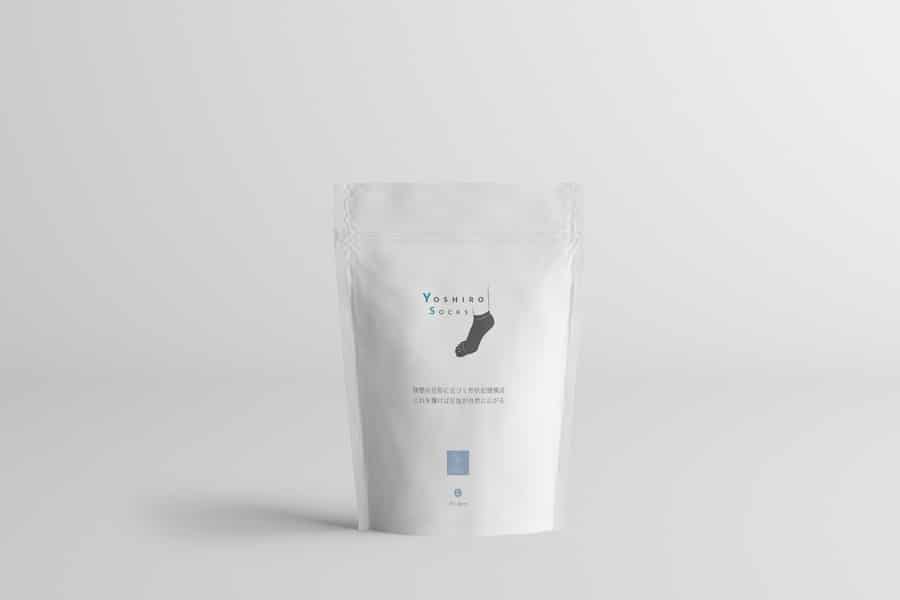
◎ Falling is scary.
The reason most people over 65 years old become bedridden is a cerebrovascular disease, senility, followed by falling and breaking bones. The number of fatalities due to falling is over 7,000 a year and now is more than the one from traffic accidents. It is important to adjust one’s living environment to the universal design, but it is also important to improve the strength of your feet so that you won’t fall. Then, how can you actually prevent from falling or tripping?
Just to test yourself, try and walk with your toes crooked. Isn’t it hard to lift your knees and toes? You will probably notice that it’s very unstable and awkward like a monkey walking. On the contrary only if your toes are stretched, you will be able to walk solidly, hardly falling or tripping.
With a cooperation of Professor Masaharu Morita at the International University of Health and Welfare in 2011, I had an experiment done with 10 women of the average age of 65 and presented the results at a conference of the Japanese Society for Medical Study of Footwear and the Japanese Society for Fall Prevention.
What I presented was the data comparison of walking distance, thigh lifting, and the number of rising from a chair in barefoot and with the socks on, the particular socks which were developed to stretch one’s toes to prevent from falling. In the experiment the number of rising from a chair which uses the quadriceps muscle strength also required to prevent from falling and the number of thigh lifting which requires the iliopsoas (hip flexor) muscle strength, both have gone up by the average of 27 percent, and so did the walking speed by 13 percent.
The walking speed has so much to do with a life span that being able to walk with firm steps is the very proof of being healthy. In another words improving and maintaining the feet condition in order to be able to walk firmly is directly connected to a healthy life span.
◎ Better “socks” than sorry
The best rehabilitation is walking. Just walking itself becomes a good training to move your overall muscles while your eyes and ears capturing and processing the information around you. For example, on a footpath along the rice fields, trails in the mountains or on a hill, you use the muscles that you don’t usually use; therefore, your toes will get trained as well.
You may think, “After all, being barefoot is the best, isn’t it?” Well, the foot deformities such as bunions, flat feet, and bunionettes could get progressively worse if you keep walking in barefoot with deformities. If you have concerns, I recommend trying the socks with functional and corrective features. Better “socks” than sorry, that is.
For your reference a lady in her seventies, who came to see me because of a difficulty in walking, started my treatment using these socks and now she came to the point where she could even lift me easily even though my weight is almost as twice as her own.










